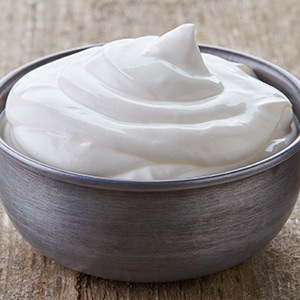- Soup's On
- Classic Fall Comforts
- Sauce-based Meals: How to Make the Perfect Sauce
- Cooking with Lentils
- 5 Recipe Ideas—in the Bag!
- Cooking with kidney beans
- 5 Delicious Ways to Make Mac and Cheese
- Cooking with Pasta
- Cooking with Sweet Potatoes
- Cooking with Beets
- 1 Slow Cooker, 5 Ingredients
- Cooking with Carrots
- Cooking with Parsnips
- Mac and Cheese, Yes Please
- 5 Comforting Soups that will Keep you Warm
- 6 Tips To Outsmart Winter Blues
- Five perfect Outdoor Sport Recipes
- A Simple Vegetarian Breakfast Raclette!
- Dessert Raclette
- Vegan raclette!
Sauce-based Meals: How to Make the Perfect Sauce

Beef bourguignon, butter chicken, coq au vin… Fall is about a return to delicious sauce-based dishes that fill the kitchen with wonderful aromas. The secret to cooking up comfort food? A sauce that’s cooked to perfection! Here are the best chef tips to help you rise to the challenge.
The main idea behind sauce-based dishes is simple: Cook your meat, vegetables and legumes in a liquid bubbling with flavour.
Sauces can start with a base of stock, alcohol, tomato, vegetable puree, or milk product—like cream, yogurt or béchamel.
For the perfect sauce-based dish, the liquid must complement all other ingredients. Butter chicken, for example, is famous for its balance of chicken and tangy cream. Traditional beef bourguignon blends in red wine that pairs perfectly with mushrooms, beef and carrots.
It’s important to choose your liquid base well and flavour it with herbs and spices that will complement the sweet taste of cream as well as the acidity of tomatoes.
6 tips to make the perfect sauce

1Go for cream
Thanks to its ability to bond ingredients, cream is the perfect base for sauces. It can also soften strong flavours and bring out the full taste of ingredients. Choose thick creams that will resist heat and be sure to avoid boiling, which would liquefy your base. For best results, simply simmer.
2Thicken without fat
Go for the leanest cuts of meat, poultry and fish. Eat a lot of legumes, which are high in protein and low in fat.
3Add nutrition to your sauce
Brown rice, quinoa, millet, oats… Run cooked grains through the blender and add to your sauce for a thick and nutritious twist!

4Use the right tools
A stainless-steel saucepan will distribute heat evenly and reduce the risk of sauces sticking to the bottom of the pot. It’s also best to use a wooden spoon for stirring. An aluminum whisk or metal spoon may change the colour of your sauce.
5Take your time
A thick sauce must not be boiled or cooked over high heat. Be sure to simmer to ensure the perfect texture and keep the sauce from sticking to the bottom of the pot.
.jpg)
6Leave out lumps
Although not all sauces need to be thickened with flour or cornstarch, be sure to use these ingredients carefully when you do. Coat meat pieces with flour before browning, then add to sauce. This will thicken your sauce slowly and ensure it stays lump-free and doesn’t taste like flour. If you’re using cornstarch, remember to mix with cold liquid before adding to your sauce prior to serving. You can also make a flour-based roux by heating with butter, then adding to your sauce at the very end.













